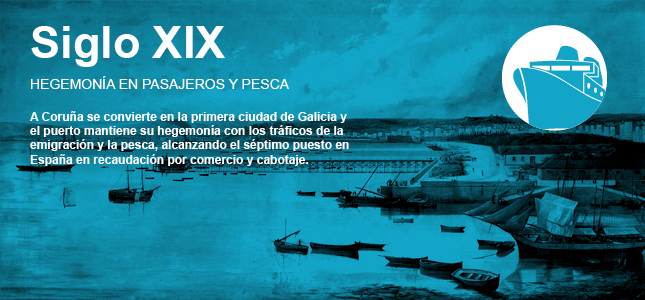19th Century

A Coruña became the first city in Galicia and the port maintained its hegemony with the emigration and fisheries traffic, rising to seventh spot in Spain in terms of trade and coastal shipping. In light of this growth, the need arose to improve the port infrastructures, and in 1867 the Harbour project, drawn up by the civil engineer, Celedonio de Uribe, was approved. The objective was to protect vessels from storms. Finally, the definitive project would not be executed until 1906, at the hand of Eduardo Vila. This engineer had designed the Iron Quay in 1870, which would be transformed into the city's symbol of industrialisation. Nonetheless, it was not wide enough and offered no protection from southerly winds, which resulted in severe batterings for vessels. It was finally demolished in 1914.
In 1877 the Port Works Board was created, with the aim of planning and building new port infrastructures. Its first principal engineer, Alfredo Álvarez Cascos, began the studies for transforming the area, with the baton for this ambitious project later being taken up by Eduardo Vila y Algorri, who signed the general draft project for the port in 1887. This consisted of dividing the bay into three harbours, separating vessels on the basis of their home port and destination of the goods. At the turn of the century, between 1894 and 1909, the Linares Rivas, Santa Lucía, La Palloza and East Quays were constructed, which would shape the port during the first quarter of the 20th century.
